Sos Agaian
Training-Free Color-Aware Adversarial Diffusion Sanitization for Diffusion Stegomalware Defense at Security Gateways
Dec 30, 2025Abstract:The rapid expansion of generative AI has normalized large-scale synthetic media creation, enabling new forms of covert communication. Recent generative steganography methods, particularly those based on diffusion models, can embed high-capacity payloads without fine-tuning or auxiliary decoders, creating significant challenges for detection and remediation. Coverless diffusion-based techniques are difficult to counter because they generate image carriers directly from secret data, enabling attackers to deliver stegomalware for command-and-control, payload staging, and data exfiltration while bypassing detectors that rely on cover-stego discrepancies. This work introduces Adversarial Diffusion Sanitization (ADS), a training-free defense for security gateways that neutralizes hidden payloads rather than detecting them. ADS employs an off-the-shelf pretrained denoiser as a differentiable proxy for diffusion-based decoders and incorporates a color-aware, quaternion-coupled update rule to reduce artifacts under strict distortion limits. Under a practical threat model and in evaluation against the state-of-the-art diffusion steganography method Pulsar, ADS drives decoder success rates to near zero with minimal perceptual impact. Results demonstrate that ADS provides a favorable security-utility trade-off compared to standard content transformations, offering an effective mitigation strategy against diffusion-driven steganography.
QRetinex-Net: Quaternion-Valued Retinex Decomposition for Low-Level Computer Vision Applications
Jul 22, 2025Abstract:Images taken in low light often show color shift, low contrast, noise, and other artifacts that hurt computer-vision accuracy. Retinex theory addresses this by viewing an image S as the pixel-wise product of reflectance R and illumination I, mirroring the way people perceive stable object colors under changing light. The decomposition is ill-posed, and classic Retinex models have four key flaws: (i) they treat the red, green, and blue channels independently; (ii) they lack a neuroscientific model of color vision; (iii) they cannot perfectly rebuild the input image; and (iv) they do not explain human color constancy. We introduce the first Quaternion Retinex formulation, in which the scene is written as the Hamilton product of quaternion-valued reflectance and illumination. To gauge how well reflectance stays invariant, we propose the Reflectance Consistency Index. Tests on low-light crack inspection, face detection under varied lighting, and infrared-visible fusion show gains of 2-11 percent over leading methods, with better color fidelity, lower noise, and higher reflectance stability.
CMAWRNet: Multiple Adverse Weather Removal via a Unified Quaternion Neural Architecture
May 03, 2025



Abstract:Images used in real-world applications such as image or video retrieval, outdoor surveillance, and autonomous driving suffer from poor weather conditions. When designing robust computer vision systems, removing adverse weather such as haze, rain, and snow is a significant problem. Recently, deep-learning methods offered a solution for a single type of degradation. Current state-of-the-art universal methods struggle with combinations of degradations, such as haze and rain-streak. Few algorithms have been developed that perform well when presented with images containing multiple adverse weather conditions. This work focuses on developing an efficient solution for multiple adverse weather removal using a unified quaternion neural architecture called CMAWRNet. It is based on a novel texture-structure decomposition block, a novel lightweight encoder-decoder quaternion transformer architecture, and an attentive fusion block with low-light correction. We also introduce a quaternion similarity loss function to preserve color information better. The quantitative and qualitative evaluation of the current state-of-the-art benchmarking datasets and real-world images shows the performance advantages of the proposed CMAWRNet compared to other state-of-the-art weather removal approaches dealing with multiple weather artifacts. Extensive computer simulations validate that CMAWRNet improves the performance of downstream applications such as object detection. This is the first time the decomposition approach has been applied to the universal weather removal task.
Unveiling the Invisible: Enhanced Detection and Analysis of Deteriorated Areas in Solar PV Modules Using Unsupervised Sensing Algorithms and 3D Augmented Reality
Jul 12, 2023



Abstract:Solar Photovoltaic (PV) is increasingly being used to address the global concern of energy security. However, hot spot and snail trails in PV modules caused mostly by crakes reduce their efficiency and power capacity. This article presents a groundbreaking methodology for automatically identifying and analyzing anomalies like hot spots and snail trails in Solar Photovoltaic (PV) modules, leveraging unsupervised sensing algorithms and 3D Augmented Reality (AR) visualization. By transforming the traditional methods of diagnosis and repair, our approach not only enhances efficiency but also substantially cuts down the cost of PV system maintenance. Validated through computer simulations and real-world image datasets, the proposed framework accurately identifies dirty regions, emphasizing the critical role of regular maintenance in optimizing the power capacity of solar PV modules. Our immediate objective is to leverage drone technology for real-time, automatic solar panel detection, significantly boosting the efficacy of PV maintenance. The proposed methodology could revolutionize solar PV maintenance, enabling swift, precise anomaly detection without human intervention. This could result in significant cost savings, heightened energy production, and improved overall performance of solar PV systems. Moreover, the novel combination of unsupervised sensing algorithms with 3D AR visualization heralds new opportunities for further research and development in solar PV maintenance.
QSAM-Net: Rain streak removal by quaternion neural network with self-attention module
Aug 08, 2022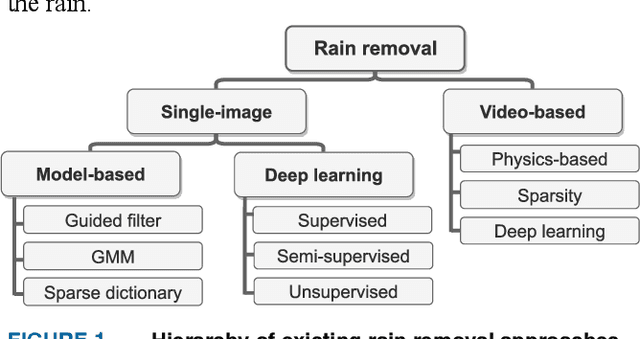


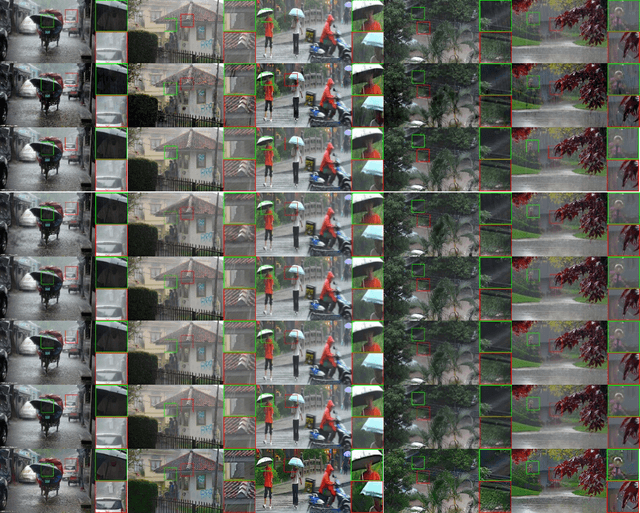
Abstract:Images captured in real-world applications in remote sensing, image or video retrieval, and outdoor surveillance suffer degraded quality introduced by poor weather conditions. Conditions such as rain and mist, introduce artifacts that make visual analysis challenging and limit the performance of high-level computer vision methods. For time-critical applications where a rapid response is necessary, it becomes crucial to develop algorithms that automatically remove rain, without diminishing the quality of the image contents. This article aims to develop a novel quaternion multi-stage multiscale neural network with a self-attention module called QSAM-Net to remove rain streaks. The novelty of this algorithm is that it requires significantly fewer parameters by a factor of 3.98, over prior methods, while improving visual quality. This is demonstrated by the extensive evaluation and benchmarking on synthetic and real-world rainy images. This feature of QSAM-Net makes the network suitable for implementation on edge devices and applications requiring near real-time performance. The experiments demonstrate that by improving the visual quality of images. In addition, object detection accuracy and training speed are also improved.
Weighted Histogram Equalization Using Entropy of Probability Density Function
Nov 23, 2021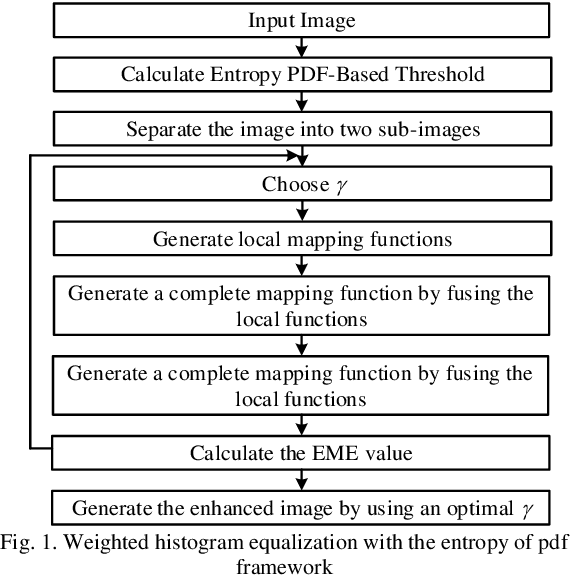
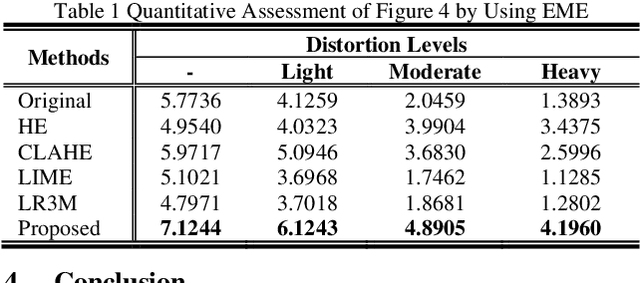
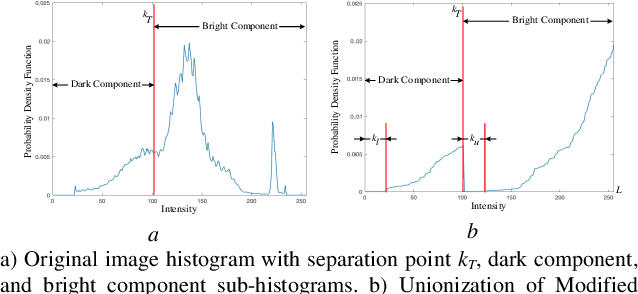
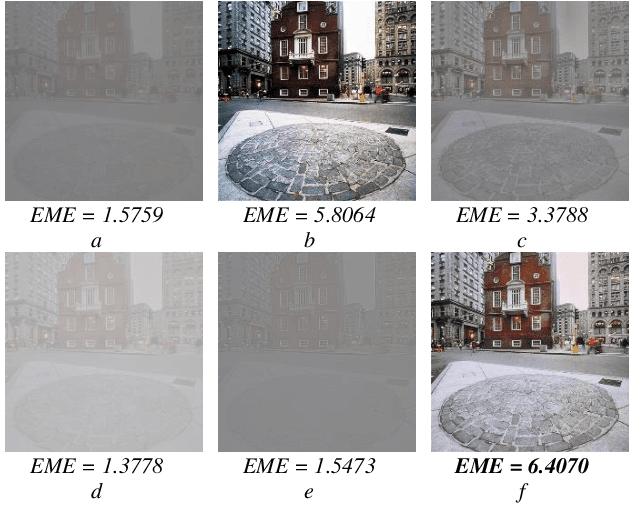
Abstract:Low-contrast image enhancement is essential for high-quality image display and other visual applications. However, it is a challenging task as the enhancement is expected to increase the visibility of an image while maintaining its naturalness. In this paper, the weighted histogram equalization using the entropy of the probability density function is proposed. The computation of the local mapping functions utilizes the relationship between non-height bin and height bin distributions. Finally, the complete tone mapping function is produced by concatenating local mapping functions. Computer simulation results on the CSIQ dataset demonstrate that the proposed method produces images with higher visibility and visual quality, which outperforms traditional and recently proposed contrast enhancement algorithms methods in qualitative and quantitative metrics.
A New Randomness Evaluation Method with Applications to Image Shuffling and Encryption
Nov 07, 2012
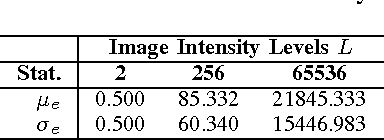
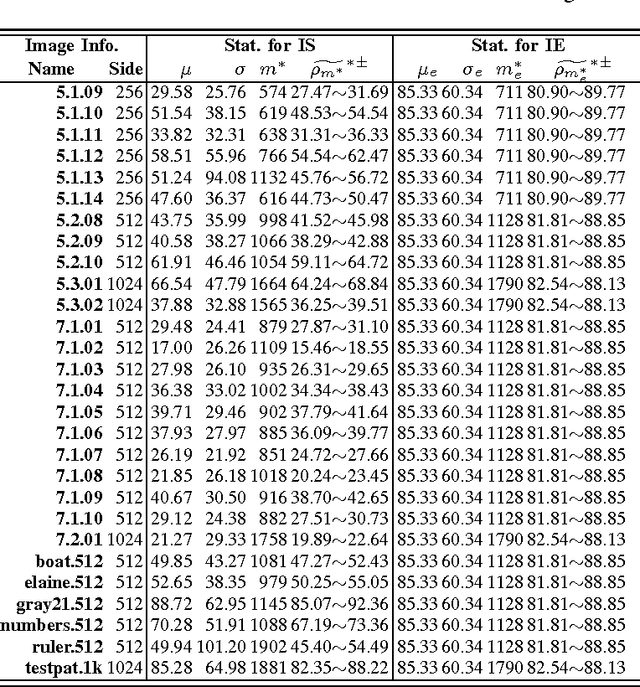
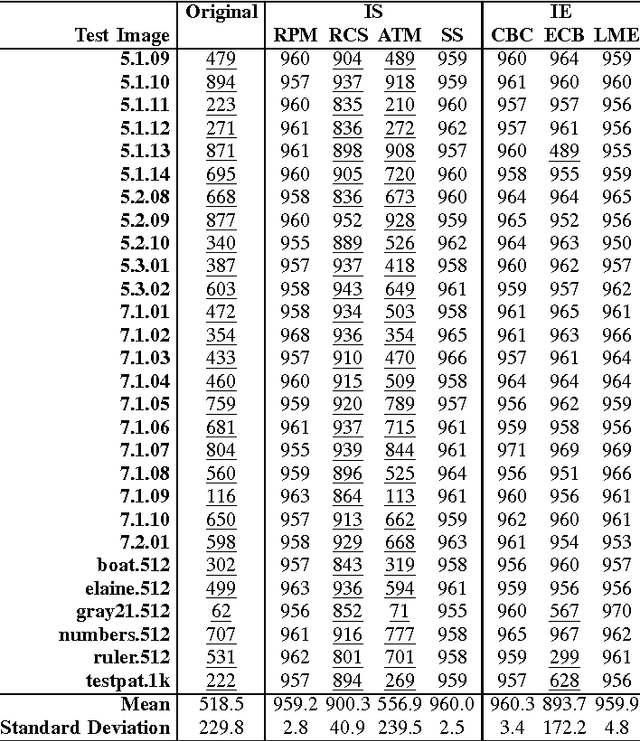
Abstract:This letter discusses the problem of testing the degree of randomness within an image, particularly for a shuffled or encrypted image. Its key contributions are: 1) a mathematical model of perfectly shuffled images; 2) the derivation of the theoretical distribution of pixel differences; 3) a new $Z$-test based approach to differentiate whether or not a test image is perfectly shuffled; and 4) a randomized algorithm to unbiasedly evaluate the degree of randomness within a given image. Simulation results show that the proposed method is robust and effective in evaluating the degree of randomness within an image, and may often be more suitable for image applications than commonly used testing schemes designed for binary data like NIST 800-22. The developed method may be also useful as a first step in determining whether or not a shuffling or encryption scheme is suitable for a particular cryptographic application.
 Add to Chrome
Add to Chrome Add to Firefox
Add to Firefox Add to Edge
Add to Edge